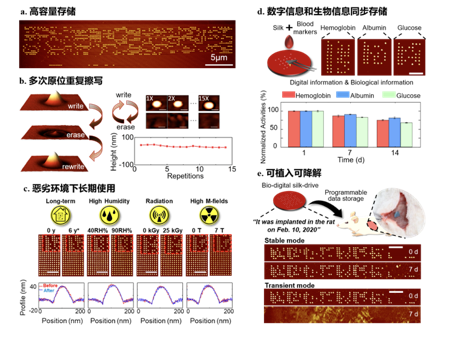August 17, 2020
2276
On August 11, a paper published in "Nature Nanotechnology" reported that the research team from the Shanghai Institute of Microsystem and Information Technology, Chinese Academy of Sciences and the State University of New York at Stony Brook and the University of Texas at Austin have realized silkworm silk for the first time. High-capacity biological storage technology of protein.
This kind of storage technology uses natural silk protein with good biocompatibility, easy doping and functionalization, and controllable degradation rate as the information storage medium, and near-field infrared nanolithography technology as the digital information writing method. At present, the team has used this technology to verify the principle of accurate recording, storage, and "reading" of image and audio files such as "Bombyx nibbles" and "Konggu Birdsong".

In addition, as a new high-capacity and high-reliability storage technology, silk protein memory can not only store digital information like ordinary semiconductor hard disks, but also provide a huge platform for active biological information storage for collecting and storing biological information. , While storing human DNA and blood samples. And this kind of memory can also be controlled and destroyed according to the preset time sequence, so as to be used for information confidentiality.
It is worth mentioning that this hard drive is not afraid of strong magnetic fields and strong radiation. After 30 minutes of high heat in the microwave, the information in the silk hard drive is still "safe and sound." At present, the storage capacity of the silk hard disk has reached 64GB per square inch, which is equivalent to 0.5TB.

The researchers said that because silk protein memory is easily mixed with various functional molecules for functionalization, it can increase the dimension of information storage. In addition, the near-field optical technology based on the atomic force microscope provides the possibility for the in-situ processing and characterization of biomaterials at the nanometer scale. In the future, through continuous optimization and improvement of the storage capacity and read-write rate of silk protein memory, this technology is expected to become the next generation of high-capacity, highly reliable information storage technology.